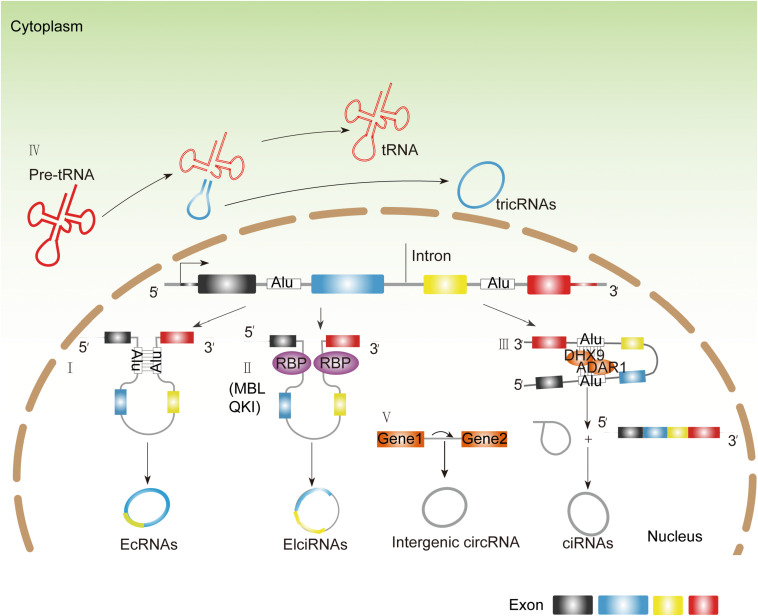FIGURE 1.
The endogenous biosynthesis of circRNAs. (I) Longflanking introns and inverted repeat elements (such as Alu elements) promote competition between the linear splicing and back-splicing of exons, leading to the generation of EcRNAs. (II) Some RBPs like MBL and QKI can recognize the specific motifs within flanking introns and directly bind on them, dragging two splicing sites close enough to promote back-splicing subsequently. (III) Some RBPs like DHX and ADAR1 disrupt base pairing between inverted repeat elements, allowing the splicing machinery to generate linear mRNA. (IV) TricRNAs are generated from introns spliced from pre-tRNA (V). Intergenic circRNAs contains two intronic circRNA fragments.

